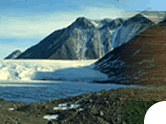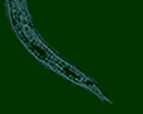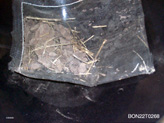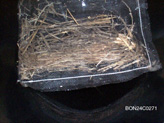Global Litter Invertebrate
Decomposition Experiment
Bondoukuy,
Burkina Faso
Site
Manager
Dr.
Victor Hien
CREAF-INERA
BP476 Ouagadougou 01
Burkina Faso
Telephone: (+226) 31 92 02
Fax: (+226) 34 02 71
Dr. Dominique
Masse
Institut de Recherche pour le Développement
(IRD)
UR "Interactions biologiques dans les sols des systèmes anthropisés
tropicaux"
01 BP182 Ouagadougou
Burkina Faso
Telephone: (+226) 30 67 37
Fax : (+226) 31 03 85
Site Description
This site is twenty-five years old. The fallow lands have
been fenced for the last ten years. The site has no grazing
by animals and, bush fires are regular.
Site Location
This site is located in the Soudanian savanna
zone at 11°20`N; 4°15`W.
Site
Area
Site area is 1 ha.
Site
Elevation
Site elevation is 360 m.
Annual Rainfall
Annual rainfall
is 950 mm mean per year (falling between June and October)
and 7 to 8 month of dry season.
Annual Temperature
Temperature
means are maximum 40°C, minimum 25°C (provisional
data, subject to confirmation).
Soil
Soil is classified
as Ferrungineous tropical soils (French classification),
Alfisol (FAO classification). In the 0-20 cm layer, soil
is: 11.5% clay, 29.2% silt, 59.3% sand. Total carbon
is 0.69 mg/g, total nitrogen is 0.45 mg/g, and ECC is
4.5 meg/100g.
Native
Forest/Vegetation Types
Native vegetation
is Soudanian savanna: shrub to wooded savanna. Woody
layer consists of Burkea africana, Butyrospermum parkii,
Detarium microcarpu, Combretum glutinosum, Gardenia errubescens,
and Pterocarpus erinaceus. Herbaceous layer consists
of Andropogon ascinodis, A. gayanus, Elionurus elegans,
Eragrostis tremula, Loudetia togoensis, Ctenium newtonii.
Principal
Biome/Ecoregion
Eco-region is savanna of the semi-arid zone of West Africa.
Great disturbances by human activity include cop-fallows
rotation (with trend of the decrease of the fallows period
length), livestock production, and bush fire. Principal
crops include: cotton, pearl millet, sorghum and maize.
Photo Gallery
|














